The Joro spider, Trichonephila clavata, (Figure 1) is a native of Japan and East Asia that was first documented in the United States in 2014 in northeast Georgia (Figure 2). The initial population appeared to be centered around Braselton and Hoschton, GA, along I-85. By 2022, the spiders had spread about 75 miles in all directions from that initial detection (Figure 3).
The native range of these spiders in Asia extends from southeast Asia northward through a swath of eastern China, the Korean peninsula, and all but the northernmost island of Japan, and westward to India and the foothills of the Himalayas.
Given that distribution, there seems to be no obstacle to the Joro eventually expanding its range to include all of Georgia, the Southeast, and most of the rest of the eastern U.S. as well.
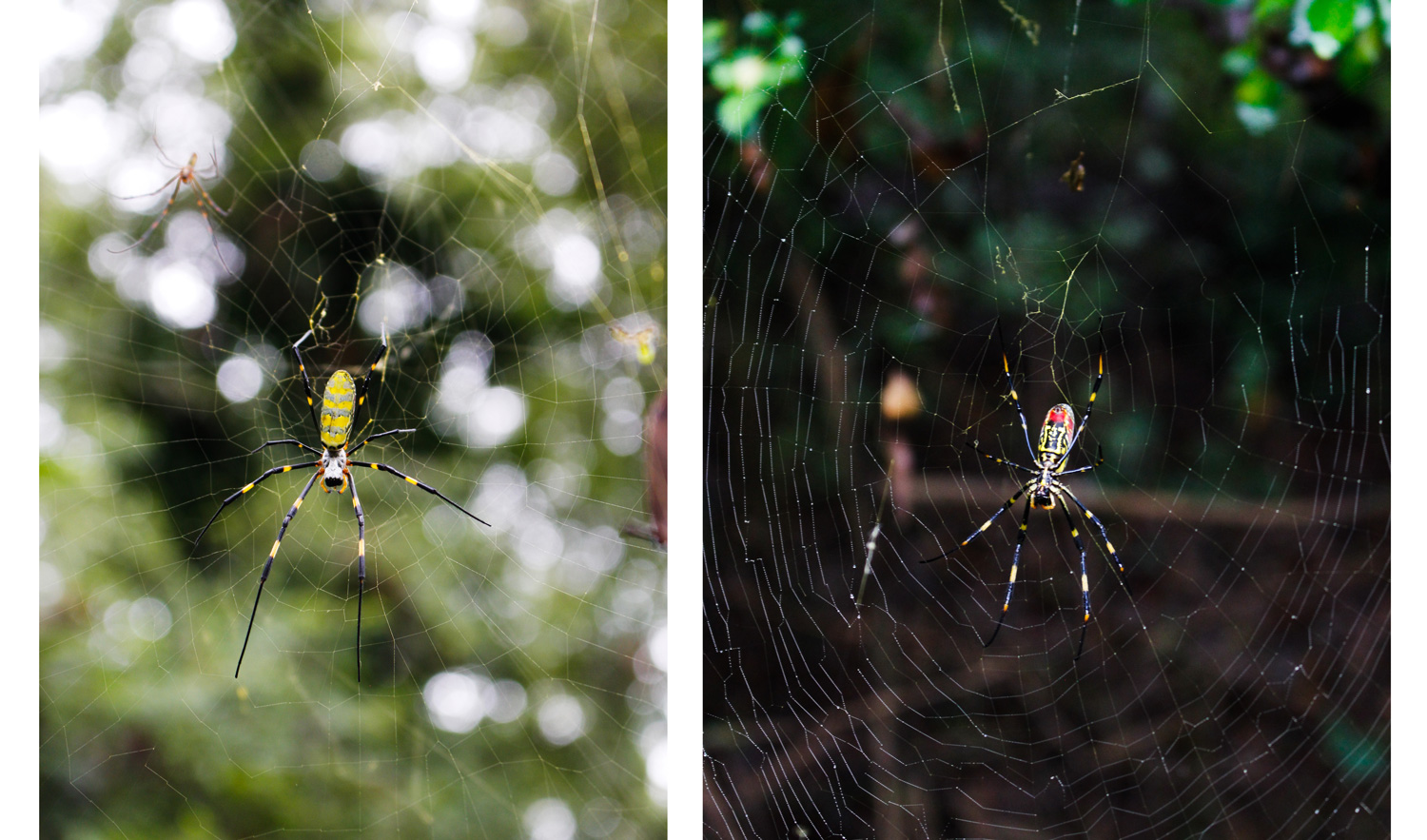
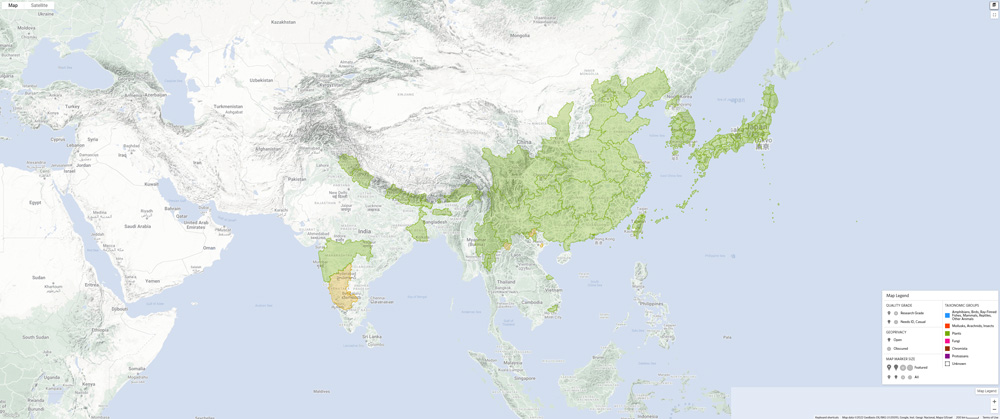
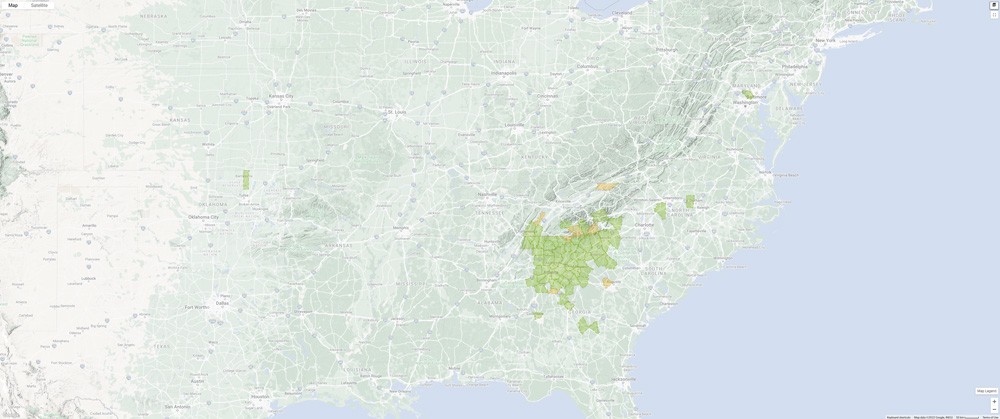
Description
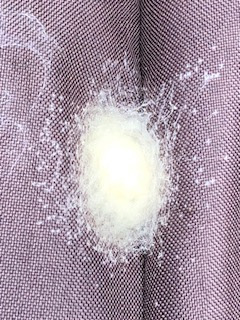
Adult female Joro spiders (Figure 1A) are very large and colorful, with a body length that can exceed 1 in. The cephalothorax is silver or white above and the abdomen is bright yellow with teal-colored bands. The underside is black and white checked with red splotches near the tail end. The black-and-yellow banded legs are up to 3 in. long.
The egg mass is fuzzy and off-white in color (Figure 4A). Immature Joros are much less colorful and can be difficult to differentiate from other web spiders (Figures 4B–4F), but they begin to acquire their adult colors in mid-summer (Figure 4). Females are easily recognizable by mid-August (Figure 4G).
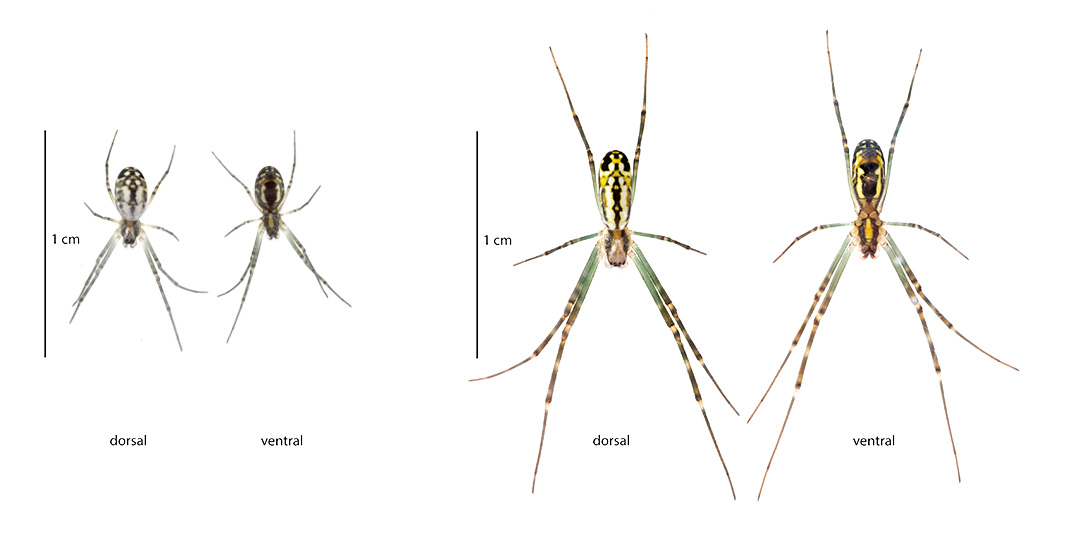
Males are not nearly as striking as females and may not be recognized as the same species. They are much smaller, more slender, and have drab brown, yellow, and black coloration on the abdomen (Figures 1A and 5).
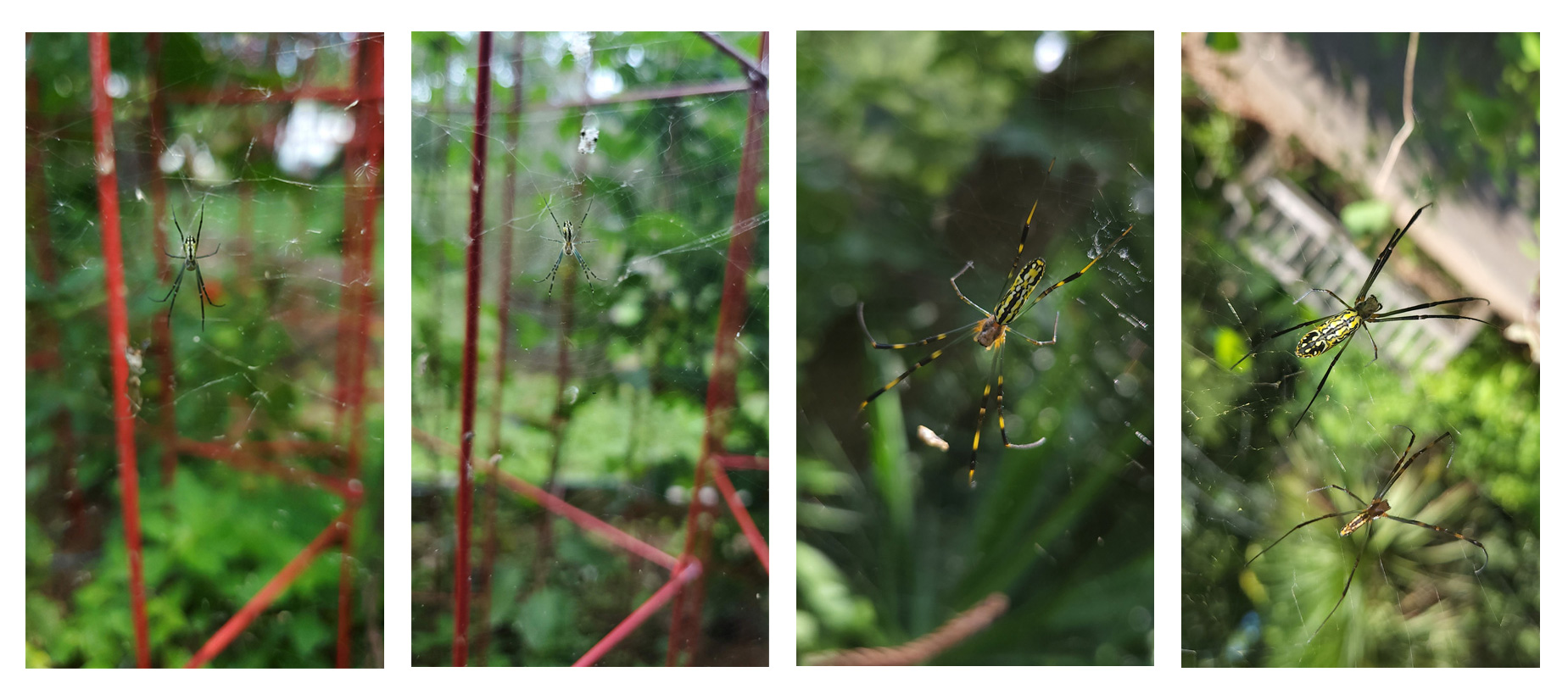
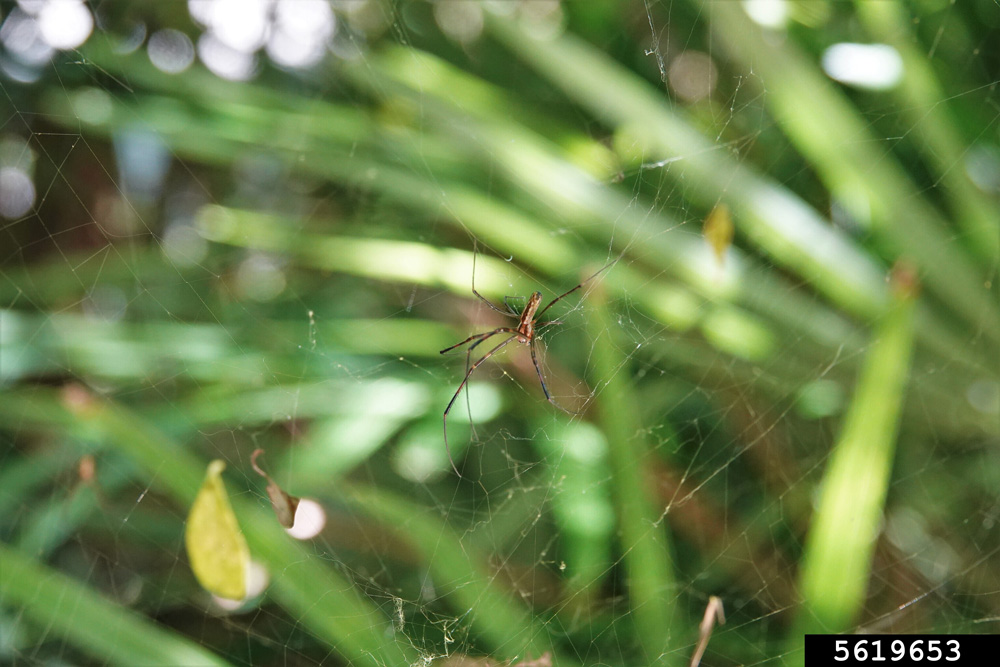
Besides their size, the most striking feature of the Joro is the web. Young spiders spin silk that is clear and looks much like any other web-spider silk, but as they grow the silk becomes thicker and stronger. Mature females spin silk that is yellow or golden in color and very strong and sticky. These webs may span 10 ft or more, with support strands that can reach 20 ft or longer and stretch between the tops of large trees (Figure 6).
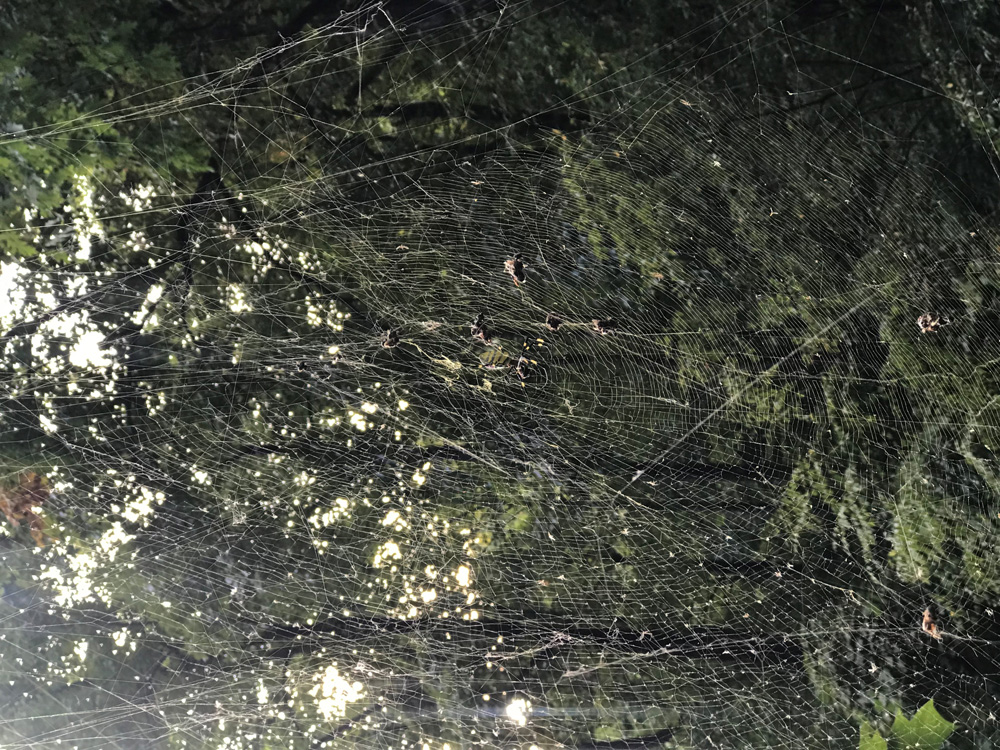
Although these are large spiders, they are also very timid. Their first response to an encounter with people is to run away; from our experiences to date, even with handling them in rough ways (e.g., removing their webs or pinching them to put in a collection vial), they do not bite.
Life Cycle
Like many of our native web spiders, Joros spend the winter in the egg stage. Females deposit their eggs in the fall, in batches of several hundred to more than 1000 in silk-covered egg masses that they attach to leaves, tree bark, or structures (Figure 4A). Eggs hatch during April and May. The spiders spend the summer growing and begin to mature in August and September (Figure 4). There is just one generation per year.
Control Options
The most direct way to eliminate problematic spiders is to kill them. The manual technique of wrapping them up in the web and stepping on them is very effective. Simply destroying the web is not effective, as they can rebuild it in short order. Moving them to another area where they are less problematic also can work, but that must be a good distance away or they will return. A rake, a broom, or a stick can be used for wrapping up the spiders. The higher up the spider is, however, the better the chance it will end up on your head. It is probably better to ignore the ones that are more than about 10 ft up and just concentrate on those that are in the way.
A series of insecticide spray trials were conducted using readily available products purchased from a local garden center. All products included “spider” on the label, as opposed to more generic “pest” or “insect” labels. The spray trials were interesting, and several products were found to be effective at killing individual spiders, including a couple that are relatively nontoxic and safe to use. Only the aerosols that are designed to target wasp and hornet nests have the range to reach a web up under the eaves of a house.
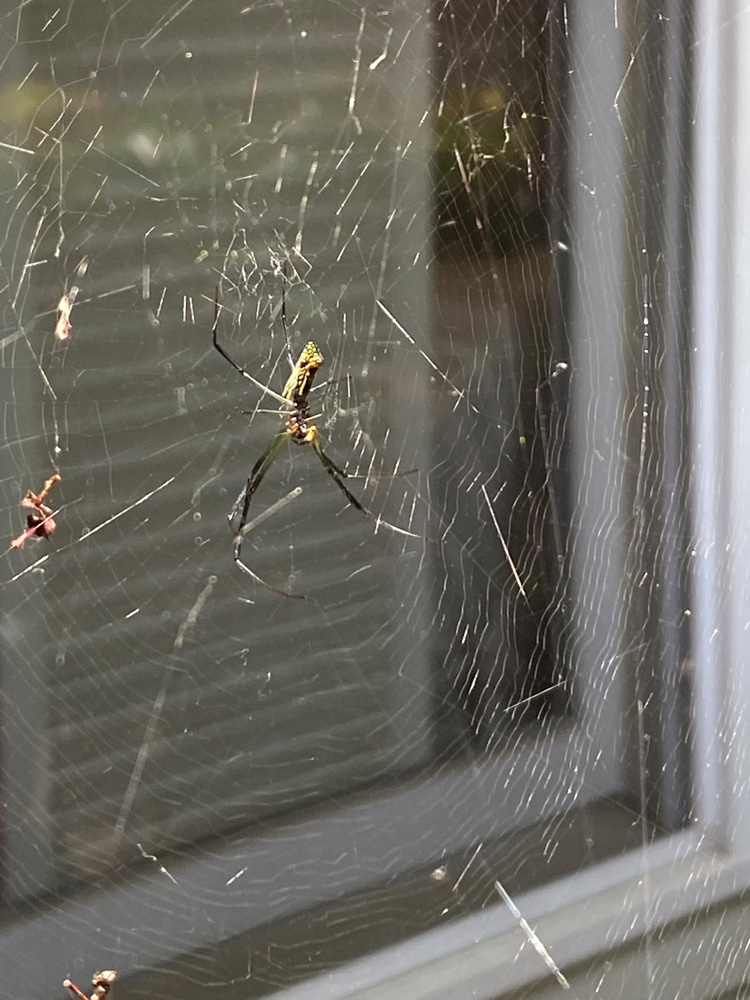
The aerosol Black Flag Spider and Scorpion Killer (with active ingredients lambda-cyhalothrin 0.03% and prallethrin 0.025%) killed 100% of treated spiders. An aerosol called Zevo Insect Killer Spray for Ant, Roach and Spider also was very effective (> 97% mortality). At the time of testing, the active ingredients of the Zevo spray were geraniol and cinnamon oil—which had the added benefit of smelling pretty good. Premixed, ready-to-use pyrethroids (Sevin brand spray is 0.002% lambda-cyhalothrin) and Green Light Insecticidal Soap (in a manual pump spray bottle) also were effective with greater than 80% mortality. Note that the current versions of any of these products may have slightly different active ingredients. Both of those products require that you spray the spiders from about a foot away, so that’s a drawback if you really don’t want to get close to the spiders. Two or three squirts with a spray bottle are effective on small to medium spiders, but larger spiders may require five or more sprays. The aerosols (Black Flag and Zevo) were effective with just a brief blast. Dawn dishwashing soap at 1% solution in water was not very effective, with only 40% mortality.
Many other homeowner products have synthetic pyrethroid insecticides as the active ingredients (cypermethrin, lambda-cyhalothrin, bifenthrin, etc.) and can be purchased in either ready-to-use packaging or in concentrate form that the homeowner can mix in a pump-style garden or backpack sprayer. Previous experience has shown these ingredients are all effective at killing spiders if applied directly to the target. Once these products dry on a surface (leaf, wall, etc.) they are not very effective for web spiders because the spiders do not eat or come into contact with the residues. Pyrethroids also are toxic to lots of other things besides insects and spiders; spraying one spider at a time minimizes the impact. However, those are the same chemicals used by pest control companies to treat for mosquitoes and other bugs in the yard, so if you are not comfortable with that approach then those products are not your best choice.
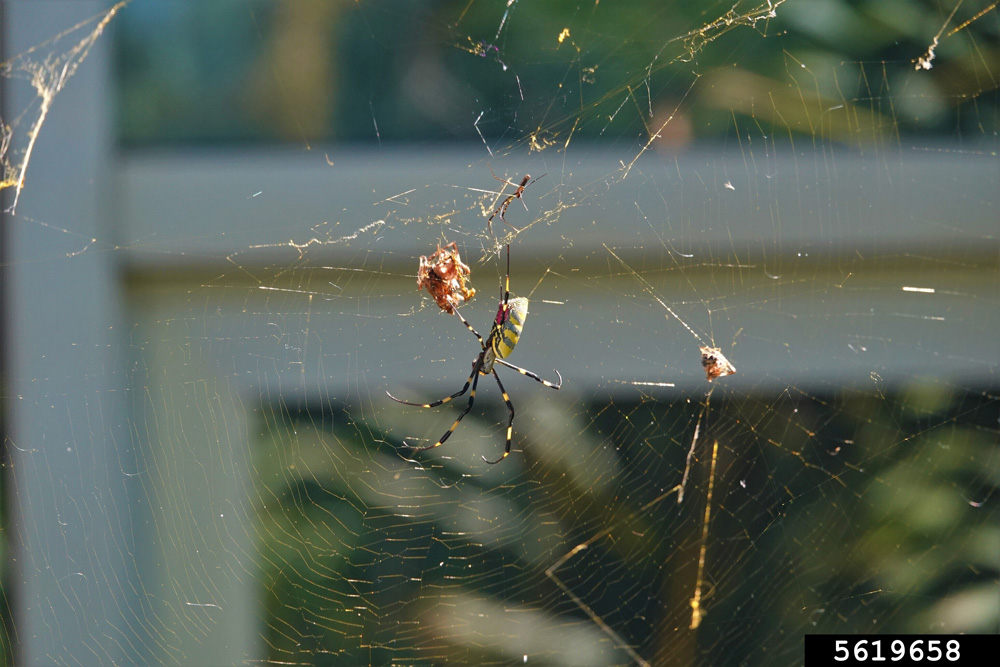
For those homeowners who are somewhat tolerant of spiders, our recommendation is to remove and kill any spiders that build webs on or adjacent to porches, walkways, decks, and doorways (Figure 7)—in other words, anywhere contact with the webs is inevitable. On the periphery of the yard, or in shrubbery beds where people do not walk, these spiders can be left alone. The two places where no one should allow the webs to remain are around pollinator or flower gardens and bee hives (Figure 8A).
Of course, many professional lawn care companies offer pest control as an option. These services typically use pyrethroid insecticides that are very effective either as a spray or as a fog for mosquitoes (among these products, cypermethrin is common, but so is bifenthrin and several other products; the active ingredients almost always end in -thrin). Remember that area-wide sprays and fogging will kill many other insects, including pollinators, beneficial predators, and beneficial parasites that help keep pest insects in check. Scale insects in particular have been shown to increase in number and damage after these treatments. Please carefully read the label of any insecticide before using.
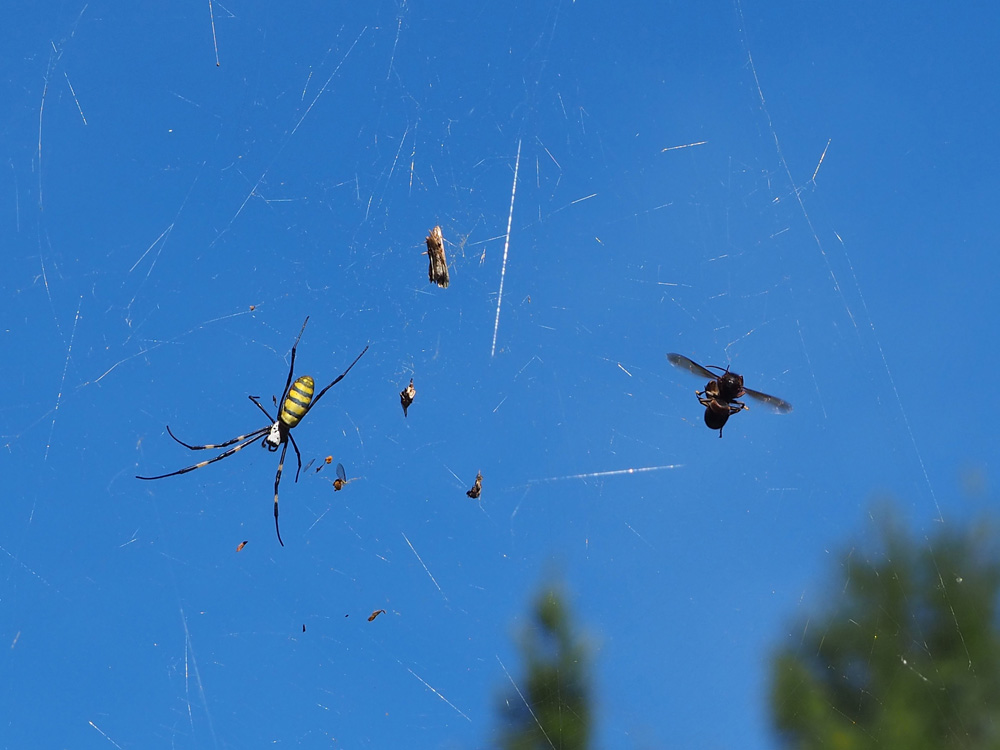
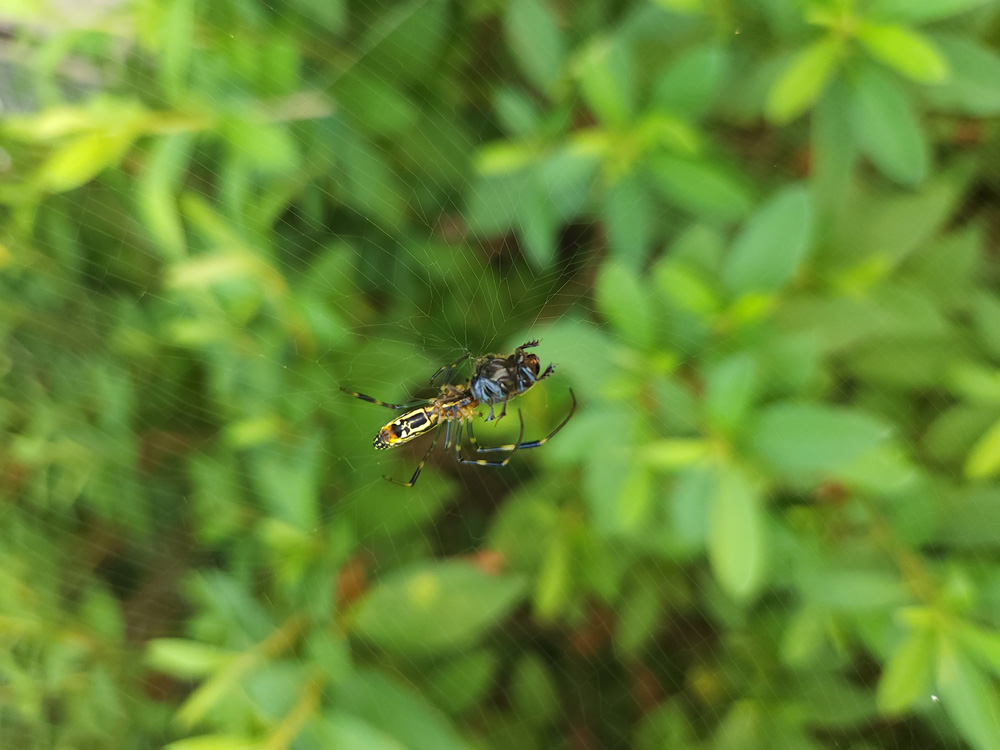
Status and Revision History
Published on Jul 13, 2023


























































